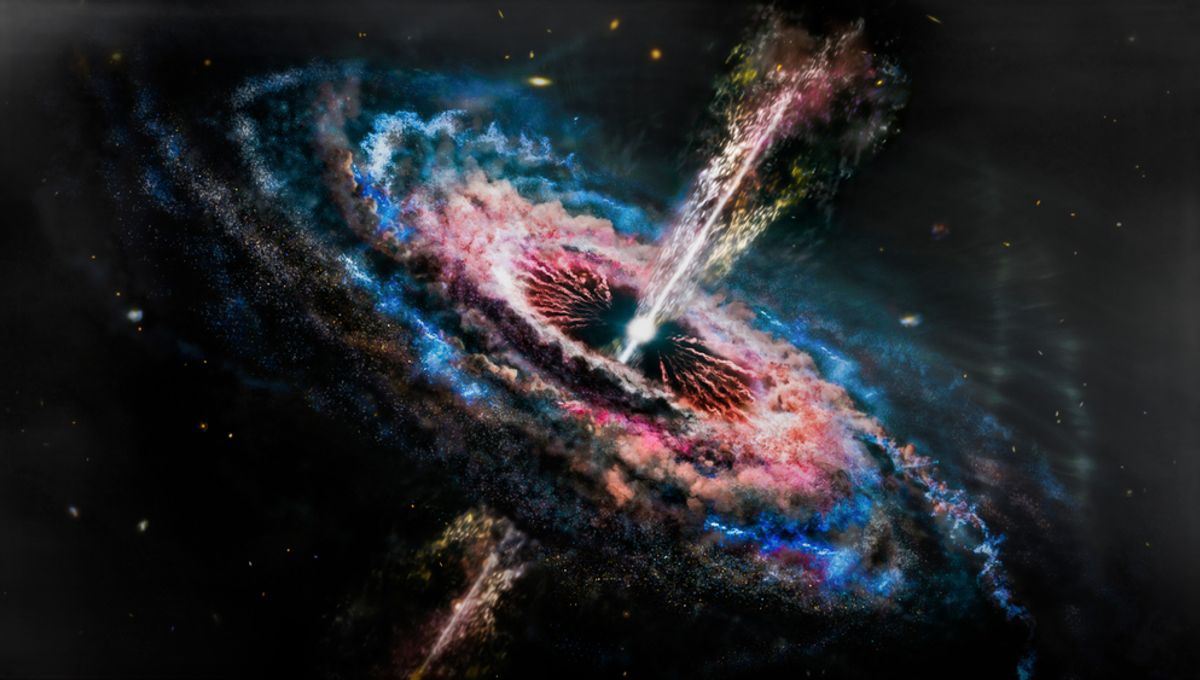
Variations in the brightness of quasars from the early universe have been used to measure time dilation back to only a billion years after the Big Bang. The findings reveal an era when clocks moved five times slower than they do today – or would have, if there had been anyone to make clocks. It also provides something of a relief to cosmologists, who had struggled to make sense of results from previous quasar samples.
The fact that time appears to pass differently for people moving close to the speed of light compared to those who are stationary is a core feature of Einstein’s Theory of Special Relativity, General Relativity predicted this phenomenon, known as time dilation, also occurs between differing gravitational fields, something which has since been verified experimentally.
Upon the discovery that the universe is expanding, physicists realized there should also be time dilation over time, that from our perspective the past moved at a slower pace. Determining how much slower proved a considerable challenge, however. A new paper may have now resolved that.
“Looking back to a time when the universe was just over a billion years old, we see time appearing to flow five times slower,” said lead author Professor Geraint Lewis of the University of Sydney in a statement. “If you were there, in this infant universe, one second would seem like one second – but from our position, more than 12 billion years into the future, that early time appears to drag.”
To measure time dilation, we need something that changes in brightness on a period we can estimate.
Supernovas have allowed us to track the extent to which time looks different around seven billion years ago compared to now. However, bright as they are, few supernovas are sufficiently visible from before that point. Galaxies that only change their brightness over the course of millions of years are of little use.
The most distant quasar we can see, however, is 13 billion years back in time. The extreme light produced by its accretion disk can be seen despite the immense distance. Lumpiness and turbulence in their accretion disks cause variation in quasars’ brightness. Lewis explained to IFLScience that these variations, although not completely predictable, are not entirely random. “It’s a bit like the stockmarket,” he said. “Over the last couple of decades, we’ve seen there is a statistical pattern to the variation, with timescales related to how bright a quasar is and the wavelength of its light.”
Using this knowledge, we can group together quasars that are similar in other features, but at very different distances, and use this to see whether the more distant ones appear to be changing more slowly.
Lewis and co-author Dr Brendan Brewer of the University of Auckland aren’t the first to see quasars’ potential as standard clocks to measure the time dilation of the early universe, but previous efforts produced puzzling results.
One study found no correlation between a quasar’s distance and the extent to which its variability appears to lag to us. If true, this would present a fundamental challenge to our understanding of the laws of physics.
In an effort to avoid such a problem, some physicists proposed the variability we see comes not from the quasars themselves, but distortions created by black holes passing between us and them. There’s no other evidence that our view of the universe is being affected by undetected black holes, so the fact the idea was even considered indicates how troubling the results were.
As Lewis added to IFLScience; “If the variation is caused by something between us and the quasar it means we really don’t understand quasars, and the physics of accretion disks, at all.” Others even suggested complete rewrites of cosmology, for example abandoning the idea that space is expanding.
However, it looks like nothing so drastic is needed. Lewis and Brewer used a sample of 190 quasars, some of which date back more than 12 billion years. Observations were taken by a University of Illinois team who had observed their brightness far more frequently than those in previous studies, creating more reliable estimates of their periods.
The authors report a pattern of increased dilation the further back we look toward the early universe, just as the Theory of Relativity would suggest.
“Where supernovae act like a single flash of light, making them easier to study, quasars are more complex, like an ongoing firework display,” Lewis said. “What we have done is unravel this firework display, showing that quasars, too, can be used as standard markers of time for the early universe.”
The study is published in the journal Nature Astronomy.
Source Link: Time Ran Five Times Slower In The Early Universe, Quasars Reveal